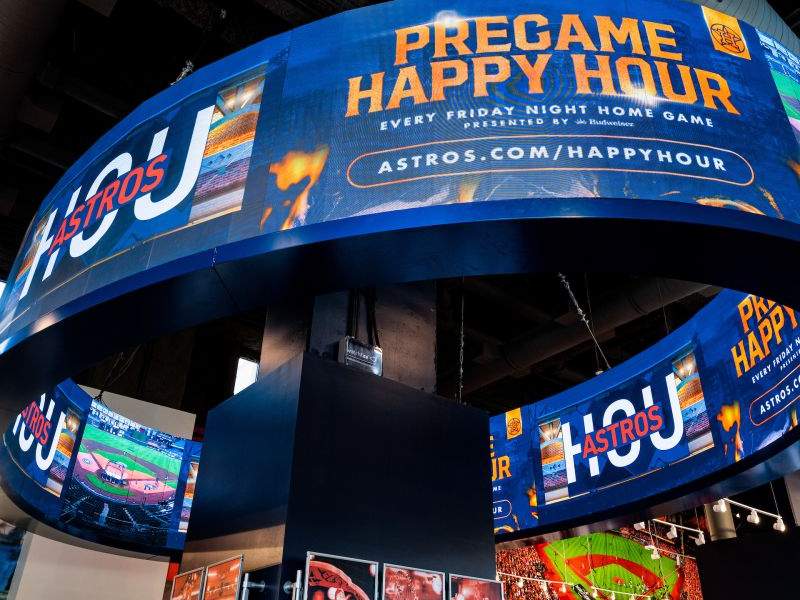Quick‑service restaurants (QSRs) and menu‑board operators are under constant pressure to engage customers, increase up‑sell / cross‑sell, refresh offers rapidly and keep operations efficient. In this environment digital signage — particularly digital menu boards — offers a strong solution. When powered by specialist media‑players such as the BrightSign range, operators gain distinct advantages. This article explores how these players enrich menu‑board deployments and the QSR display environment.
1. Reliability and performance built for 24/7 use
The BrightSign players (including the XD5 series) are purpose‑built for digital signage rather than simply repurposed PCs. Their operating system (BrightSignOS™) is optimised for signage applications: secure, robust and reliable. For a QSR environment where menu boards may run continuously, day‑in day‑out, this durability is a key advantage.
In addition, the hardware supports modern video formats (for example H.265/HEVC decoding) and 4K/60Hz playback on some models, enabling high‑impact visuals. Simply put, for demanding environments such as drive‑thrus, multi‑zone screens or video walls, the BrightSign players deliver the performance needed.
2. Content flexibility and real‑time updates
A menu board is only as good as its content, and QSRs often need to update menus for specials, pricing changes, seasonal offers or even adjust in real‑time to stock availability. BrightSign’s ecosystem supports this well. For example, BrightSign players power rotating video and motion graphics in restaurant digital menu boards.
Moreover, the platform supports live data feeds, HTML5 content layers, synchronised playback across multiple screens and flexible scheduling. For example, an operator could trigger a specific promotion when inventory falls below a threshold, or schedule breakfast‑to‑lunch menu updates automatically. This flexibility elevates menu boards from static display to dynamic sales‑tools.
3. Multi‑zone, multi‑screen & video‑wall capability
Modern QSRs often deploy multiple displays: for example a video wall behind the counter, separate screens for drive‑thru, and digital signage near the self‑service kiosks. BrightSign players support these scenarios. For instance, a press release highlighted how BrightSign’s players were selected by Philips Signage Solutions to power video‑walls and multi‑screen installations including menu boards. QSR Magazine+1
The ability to synchronise content, split into multiple zones (for example static price blocks + motion promotions + live feed), and manage orientation (portrait vs landscape) means that the hardware adapts to diverse physical layouts. For example, the restaurant setting can use one large player to drive multiple screens, reducing hardware duplication and simplifying management.
4. Remote management, networked control & scalability
One of the major benefits of digital signage in a chain‑QSR environment is the ability to manage displays centrally or remotely. BrightSign players integrate with cloud‑services (BSN.cloud) and CMS solutions to allow remote content updates, diagnostics, and management.
In practice this means a head‑office marketing team can push menu changes, run campaigns across all restaurants or regions, adjust drive‑thru pricing, and monitor playback health — without dispatching a technician on site. For a QSR chain with many locations, this translates into savings in cost, faster responsiveness to market changes, and improved consistency of brand messaging.
5. Enhanced customer experience — engaging and up‑sell ready
Beyond operational benefits, digital menu boards powered by BrightSign players can enhance the customer experience and drive additional revenue. By utilising motion graphics, video, promotional zones and switching offers dynamically, a menu board becomes more compelling and capable of influencing choice.
For instance, BrightSign lists the “immersive drive‑through experience” as one of the use cases for restaurants, where multiple zones engage the customer and content is locally or remotely managed. Also, data‑driven signage enables more personalised, context‑aware messages.
In essence: when a menu board is not just a static list of items but a dynamic, compelling display, customers may notice specials more, opt for add‑ons, or choose higher margin items. This is especially important in QSR where margins are tight and throughput is high.
6. Future‑proof and outdoor‑ready options
QSRs often operate in varied environments — behind glass in a lobby, in a drive‑thru lane exposed to weather, near kiosks or outside. BrightSign’s architecture supports indoor and outdoor deployments. For example, their partnership with outdoor‑display manufacturer Praevar shows that BrightSign technology is embedded into outdoor‑rated screens, making them suitable for exterior menu boards.
Also, the product line is future‑ready: newer series support Power‑over‑Ethernet (PoE +), 8K video, neural‑processing units (for AI readiness) and are designed for long life‑cycle support and sustainability. For a QSR operator, this means an investment into digital signage that won’t become obsolete quickly.
7. Practical deployment tips for QSR operators in Malaysia
To gain full benefit from BrightSign players in a Malaysian QSR setting, here are a few tips:
- Ensure you match the player model to the usage: for a single full‑HD menu board a mid‑tier model (eg LS series) may suffice; for multi‑zone or 4K behind‑counter video wall use a higher‑spec model (eg XD5).
- Make use of the remote‑management features: schedule price‑updates off‑peak (away from peak lunch/dinner times) to avoid disrupting service.
- Customise promotions for local tastes: digital signage gives you flexibility to highlight Malaysia‑specific combos, local language, peak‑times offers etc.
- Use multi‑zone layout: allocate part of the screen for day‑part pricing changes (breakfast vs dinner), another part for loyalty or mobile‑app prompts, yet another for motion video of featured items.
- Consider outdoor/drive‑thru installations: ensure brightness and weather‑proofing are adequate for tropical sunlight and humidity. Using outdoor‑ready BrightSign‑embedded displays helps.
- Monitor utilisation and update content frequently: a static loop defeats the purpose — keep special offers, meal deals, and visuals fresh to sustain customer interest.
Conclusion
In summary, digital menu boards have become a strategic tool for QSRs rather than a nice‑to‑have. The investment in quality media players like BrightSign’s range (including the XD5 series) pays off through improved reliability, flexibility of content, centralised management, customer engagement and future‑proofing. For operators in Malaysia and beyond looking to elevate their menu‑board game and QSR displays, deploying BrightSign digital signage players offers a comprehensive, professional platform that supports today’s fast‑moving food service environment.
